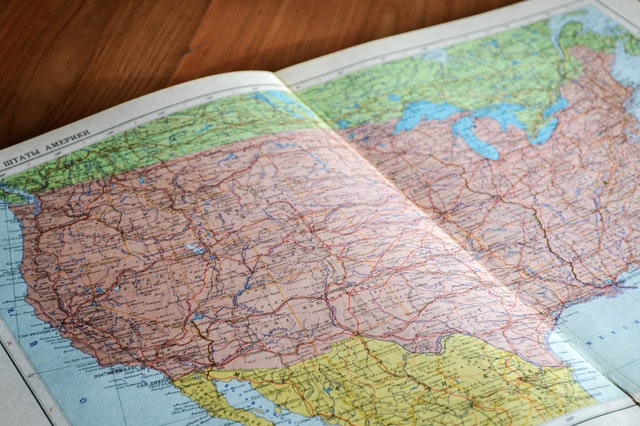Heat Level:  Medium: These tips require some experience.
Medium: These tips require some experience.
Bottom Line: Location is everything, even with the ads you're serving. Geofencing and geotargeting are two ways to use location as a trigger for digital ads - but there is a difference between the two.
Do This: Check the location targeting on any ads you're running. Then learn a bit about geofencing and decide if it could be a creative new part of your ad strategy.
 The number one question I received from clients in 2019 was this: "What is geofencing, and should I use it?"
The number one question I received from clients in 2019 was this: "What is geofencing, and should I use it?"
There's something buzzy about the word "geo." Geofencing and geotargeting have been a big topic of conversation, but not so much of explanation. So let's break down the difference between these two terms, explore how they're used, and discuss some examples of how they might be used in real estate.
Geotargeting is the simple requirement that a user be in a location in order to receive ads. As a real estate agent, you likely have a specific service area. As such, you'll want to target your ads to people in that service area. Or, if you're working on attracting out-of-town investors, you might target people in other specific areas. You don't want your ads to be served to everyone, everywhere because that would be a waste of money. Geotargeting isn't rocket science. It's really a basic requirement of running ads.
Speaking generally, ads can be geotargeted based on city, ZIP codes, states, countries, or radii. Some platforms, like Google, let you get as specific as a single zip code or a 1-mile radius. Other platforms, like Facebook, require a 15 mile radius for real estate ads.
You can also add an extra layer of specificity by selecting that you only want users in the location, or interested in the location. If someone is planning a vacation to Miami and has been researching hotels and restaurants, they would be considered "interested in" Miami.
Forgetting this setting is a mistake I see often; people wonder why their ads are being served in other areas, and it's usually because Google/Facebook equates interest with eligibility for ads.
If you're running an open house and have a limited budget to promote it, your ads should probably be targeted only to people nearby. They're more likely to be able to attend the event, recognize your name, and work with you. But if you're targeting out-of-towners who might be relocating or pass through your city often, you can serve the ad to people who are interested in your target area.
Regardless of how you use it, be smart with your geotargeting. The better your target your ads, the better your results will be.
Now here's where things get interesting. A lot of my clients have heard about fancy-sound "geofenced" ads. Geofenced ads are triggered when someone passes through a designated area. This may be as specific as a store, a trade show, or an event.
These communications are delivered most commonly through text or push notifications, or might appear when you open a certain app or social media site. Geofencing ads usually go through a third-party display network, not through Google or Facebook.
Geofencing is a newer technology, and right now it's being used mostly by brick-and-mortar businesses like coffee shops and banks. But it could be useful to real estate as well. For instance, a geofence could be set up nearby certain offices or shopping centers where target demographics are likely to spend their time be found.
The easiest way to do this is by using a mobile app. For instance, a brokerage might work with a developer to create an app so agents can select boundaries around a specific location. As customers enter that area, the app will trigger mobile alerts. Typically, customers will need to enable location services on their devices for the geofence to work.
While building an app might sounds custom and fun, it can cost thousands. However, platforms such as Simpl.fi have made geofencing more achievable. Heads up - this isn't cheap. We're talking thousands in ad spend, and often with a contract. So while I'm not trying to burst anyone's bubble, I do recommend taking a long, hard look at your marketing strategy before diving into any buzzy new ad platform or strategy.
Geotargeting your ads is a basic requirement - you don't want to waste money serving ads to people outside of your area, right? Geofencing, on the other hand, is much more of a strategic play. Don't just jump on the bandwagon because it sounds cool. Take the time to understand the service being offered to you and make sure you're using it in a way that will make sense for the goal you're trying to achieve. And always layer your geographic targeting with other demographic insights!